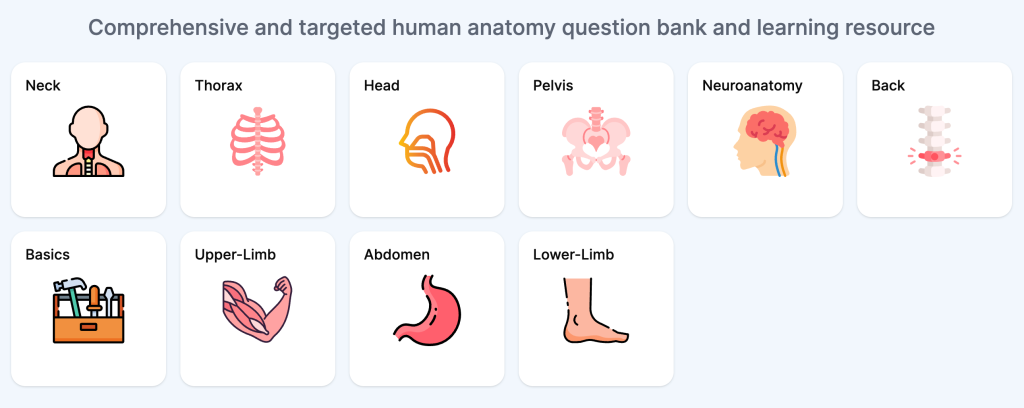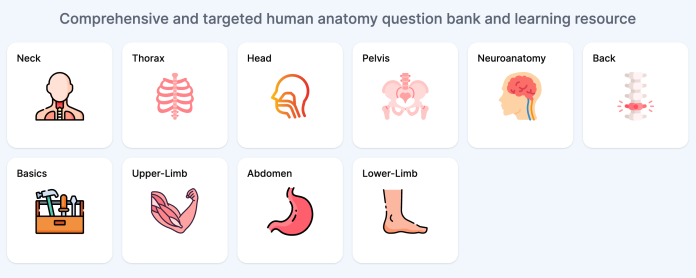For millennia, people have been captivated and mystified by human anatomy, the study of the complicated components that make up our body. Understanding human anatomy is important not just for medical experts but also for anybody interested in the wonders inside, from the skeletal structure that gives support to the intricate network of organs that enable our life. In this post, we’ll dig into the fascinating realm of human anatomy, dissecting its fundamental principles and shining a light on the amazing mechanisms that keep us alive.

Introduction: The Significance of Learning Human Anatomy
The human body is an exquisite work of art in terms of design and function. Human anatomy not only provides insight into our own physicality, but it also serves as the basis for medical sciences. A thorough grasp of human anatomy is vital for everyone from healthcare practitioners seeking to heal to artists attempting to depict the essence of life.
Basics of Human Anatomy
The Skeletal System: The Foundation of the Body Consider a framework that provides stability, protects essential organs, and acts as an anchor for muscles. That structure is the skeletal system. This system, which consists of bones, joints, and cartilage, is a wonderful scaffolding that adjusts as we develop.
Muscular System: Powering Every Move
The muscular system is responsible for all movement, from a grin to a run. This system, which is made up of muscles coupled to bones, tendons, and ligaments, enables us to explore the environment via movement.
Circulatory System: Lifeline of the Body
The circulatory system, led by the heart, is in charge of carrying oxygen, nutrition, and waste throughout the body. We are kept alive by a complicated network of arteries, veins, and capillaries.
Respiratory System: Breathing for Life
Breathing is a basic behavior that keeps us alive, and the respiratory system is the mechanism that allows it to happen. This mechanism enables a continual exchange of oxygen and carbon dioxide from breathing to expiration.
Exploring Organ Systems
Digestive System: Fueling the Body
Have you ever wondered how your body converts food into energy? The digestive system is the solution. It breaks down food, extracts nutrients, and removes waste, all while feeding our bodies.
Nervous System: Command Center of the Body
The nervous system functions similarly to the body’s communication network. It regulates our thoughts, actions, and experiences by transferring information through a complex network of neurons.
Endocrine System: Regulating Through Hormones
Hormones work in the body as messengers, controlling many activities. These critical chemical interactions are orchestrated by the endocrine system, which includes glands such as the thyroid and adrenal glands.
Reproductive System: The Circle of Life
The reproductive system is responsible for the continuance of life. It allows for the birth of new life via processes including as fertilization, pregnancy, and birthing.
The Intricacies of Cells and Tissues
Cell Structure: The Building Blocks
Cells are the basic building blocks of life. Each cell has a distinct function and structure, ranging from the nucleus, which contains genetic material, to the cytoplasm, which houses diverse organelles.
Tissue Types: From Epithelial to Connective
Tissues are collections of cells that perform similar roles. Surfaces are covered by epithelial tissue, connective tissue supports and connects, muscle tissue drives movement, and nerve tissue promotes communication.
Unveiling the Senses
Vision: The Window to the World
The feeling of seeing is incredible. Light is captured by the eye, and the brain converts it into pictures, enabling us to comprehend the world in all of its colors and shapes.
Hearing and Balance: The Ear’s Symphony
We can hear noises and keep our equilibrium thanks to the auditory system. The intricate anatomy of the ear, including the cochlea and semicircular canals, is critical to our sensory experience.
Taste and Smell: Savory Scents and Flavors
The senses of taste and scent work together to improve our eating experience. We can relish tastes and identify odors thanks to taste buds and olfactory sensors.
Maintaining Balance: Homeostasis
Through homeostasis, the body is continually striving for equilibrium. This complex control guarantees that internal circumstances stay steady in the face of external disturbances.
The Journey of a Breath: From Inhale to Exhale
Breathing may seem to be a simple operation, yet it is a fascinating one. Each breath is a concerted effort involving several systems, from muscular contraction to chest expansion.
Lifelong Learning: Discoveries and Advancements
Our knowledge of human anatomy is a work in progress. Constant discoveries and breakthroughs in medical science continue to broaden our understanding of the body’s complexities.
The Marvel of Medical Imaging: Peering Inside
X-rays, MRIs, and CT scans are examples of technological wonders that enable us to see into the human body non-invasively. These instruments have transformed medical diagnosis and therapy.
Embracing the Fascination: Learning Human Anatomy
Human anatomy is a topic that inspires us to study the marvels inside ourselves. It is intricate, sophisticated, and awe-inspiring. Learning human anatomy is a wonderful voyage of discovery, whether you’re a medical enthusiast, an artist looking for inspiration, or just someone interested about life’s secrets.
Conclusion
As we come to the end of our voyage through the wonders of human anatomy, we hope you have a deeper respect for the complexity that comprise the human body. From the bones that give structure to the senses that link us to the world, every component of our anatomy is important to our survival.
FAQs
Why is learning human anatomy important?
Understanding human anatomy is essential for medical professionals, artists, and anybody interested in the complexity of the human body.
What role do hormones play in the body?
Hormones, which are generated by the endocrine system, govern a variety of biological activities such as development, metabolism, and mood.
How do medical imaging techniques work?
X-rays and magnetic resonance imaging (MRI) utilise various sources of energy to generate detailed pictures of the body’s interior architecture.
Can I learn human anatomy without a medical background?
Absolutely! There are several resources accessible, ranging from online classes to books, to folks of diverse backgrounds.
Where can I access further information about human anatomy?
More information and resources regarding human anatomy may be found at https://www.anatomyquestionpro.com/


















